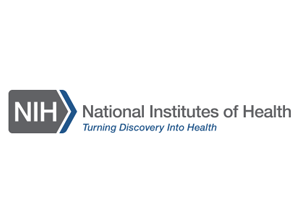Case Study
The NIH Accelerates Cure-Related Research with ORock’s Cloud Storage Solution

The Challenge
Radiology and Imaging Sciences (RIS), part of the Clinical Center at NIH, stores, protects and manages images and publishes research for thousands of NIH researchers who analyze everything from cancer to the common cold. A single study can generate up to 82,000 images. Often, these images consist of CT scans, ultrasound and other unstructured data formats.
Challenged with managing exponential data growth, the Clinical Center wanted a more efficient, scalable way to harness the full potential of its file management system. It sought a partner whose cloud platform could store and protect one of the world’s most important repositories of medical data and imaging and do so with the highest standards of security and compliance.
Accessing data in AWS long-term storage was incurring hefty costs (also known as egress fees) and users who needed immediate access to their stored data experienced delays in retrieving it from archive solutions, hence the NIH wanted speedier access to insights. NIH sought to minimize data stored in archives. It also wanted to enable its distributed facilities and healthcare providers to leverage data in the cloud and conduct image comparisons for research, training and improving treatments. Data and imaging had to be kept private and secure, sometimes indefinitely.
The Solution
To meet these requirements, RIS turned to ORock Technologies and CHESA to fast track a powerful, price-predictable cloud storage solution they could use immediately. RIS data is now stored in a multi-tier storage system and workflow supported by StorNext scale-out storage from Quantum, a 100% Xsan-compatible solution. RIS’ multitiered storage consists of tape, QXS Disk, 1PB of ActiveScale, and 500TB of ORock Technologies’ secure cloud storage as a service. ORock engineering worked with NIH to create a connection for the data feed and made it faster and more secure than the previous RIS cloud environment.
To protect images long term, the NIH Clinical Center’s new data storage strategy was designed to create two copies of new data, which includes a copy in a server-based file management system and a second copy that can be read without relying on specific, internally-managed hardware or applications. With Quantum StorNext as the storage area network (SAN) foundation, an integral part of the three-tier system is the ORock Cloud. Data remains accessible for the lifespan of a study and data integrity is protected through a full range of government-grade security protection, regulatory compliance at the highest standards and disaster recovery capabilities.
To accommodate future data growth, the NIH has the flexibility to balance performance, access, scale and cost by transparently accessing data across locations. It can increase capacity whenever needed simply by adding new drive technology and more units or further harnessing the cloud, giving researchers the ability to access data from any location through a single interface. ORock’s flat-rate billing model with no charge for data egress delivers significant savings and a cost-effective approach to data access.
The Results
NIH has a secure, high-performance cloud storage system that virtualizes research center data and makes it easier for its scientists to cost-effectively access its enormous image and data stores. Scientists are free to access their high-value data sets and do what they do best — conduct research and find cures and treatments for the most devastating diseases of our time. ORock’s FedRAMP-authorized cloud provides up to 382 security controls to enable researchers to securely access and apply data toward curing disease, without delays or data egress fees. ORock’s secure cloud platform is built on HPE Gen10 hardware and Silicon Root of Trust which provide built-in security features that help organizations prevent, detect and recover from cyber-attacks.
The NIH was looking for a way to keep its clinical data private and secure using the cloud, but without having to pay incremental fees every time its professionals accessed that information. ORock and CHESA designed and implemented a backup tier that accomplished that and meets the NIH’s data-intensive storage and access requirements.
About NIH
Radiology and Imaging Sciences provides imaging services for National Institutes of Health (NIH) Clinical Center patients participating in research protocols conducted by the various NIH institutes. Services include X-rays, fluoroscopy, mammography, ultrasound, magnetic resonance imaging (MRI) scans, computed tomography (CT) scans, and interventional radiology (special procedures). Radiology also conducts research studies of clinical imaging procedures and offers training in biomedical imaging research.
Get exceptional security, price predictability and 24/7 customer support.
Contact ORock Technologies today at 571.386.0201 or sales@orocktech.com.